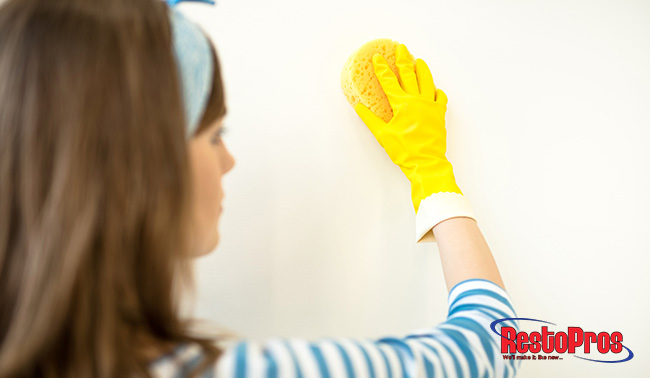Ever wonder what types of mold can get into your home? With hundreds of thousands of mold types around, this question may seem negligible at first. But we’d like to focus on the ones that have a higher chance to grow in your home. While it’s important to treat all mold outbreaks the same, it is also essential to know the qualities and capabilities of certain common mold types – as allergy and health problems can be associated with different strains.
RestoPros recommends every Dallas/Ft. Worth homeowner know the common mold types in homes. We have detailed 5 of these mold types below.
1. Alternaria
Alternaria is the most common allergenic mold found in homes. Although the strands originally resided on leaves and plants, their reproduction can spread to any area with considerable dampness. If mold growth occurs in your bathroom, for example, there’s a high chance Alternaria is present. Usually, Alternaria is found in different shades of green, gray, and black. However, these are not the only colors.
As described above, Alternaria is a known allergenic type of mold. Inhaling the spores or coming in contact with the strands can lead to symptoms such as a runny nose, chronic cough, and irritated eyes. For those with asthma or other lung conditions, these problems can exacerbate, so it’s important to remove any mold from your home as quickly as possible.
2. Aspergillus
Being another extremely common type of mold found in homes, Aspergillus is known to form in thick mold layers and in large amounts. They come in a variety of colors, due to there being hundreds of different species.
In small amounts, Aspergillus is generally unharmful, provided you have a healthy immune system. However, this mold also carries allergens, and in large amounts could produce symptoms of allergies. This mold produces rapidly and, as described, can coat a surface in many layers. Aspergillus is also a leading cause of Aspergillosis, which is an infection commonly located in the respiratory system.
3. Penicillin
Although Penicillin was a breakthrough in creating new and more powerful antibiotics, it’s also a type of allergenic mold that can reproduce in your home. Penicillin is most commonly identified by its blue and green color. It can grow on food, carpet, wallpaper, and other damp, porous surfaces.
Much like the other allergens on this list, Penicillin can also cause allergy symptoms if spores are inhaled in large quantities.
4. Mucor
If there’s a place where mold has no right to be in, it would be your air conditioning. Unfortunately, this is a common location where Mucor can spawn. Mucor is a longer, hairy type of mold that produces similar allergy effects as other mold types on this list.
5. Stachybotrys (Black Mold)
Stachybotrys has a more notable reputation compared to the other molds. It is often known as “black mold”, with their nickname being enough of a sign you should probably stay away from it, although studies on black mold have been inconclusive, one thing is for sure – they produce mycotoxins which can be irritable to inhale.
As its nickname suggests, you’ll tend to find black mold in different shades of black. However, as with most molds, this isn’t the only color it will appear as. Regardless, you’ll want to remediate any mold you see in your home, regardless of whether you can tell if it’s black mold or not.
Although we recommend Dallas/Ft. Worth homeowners have some knowledge of the types of molds commonly found in homes, we must stress that attempting to identify the variety is secondary to fighting them. A single instance of mold growth could have multiple species residing in it. Instead, we recommend you contact RestoPros as soon as you notice an infestation in your home. Contact us at 855-587-3786 for affordable and quality mold remediation services.

